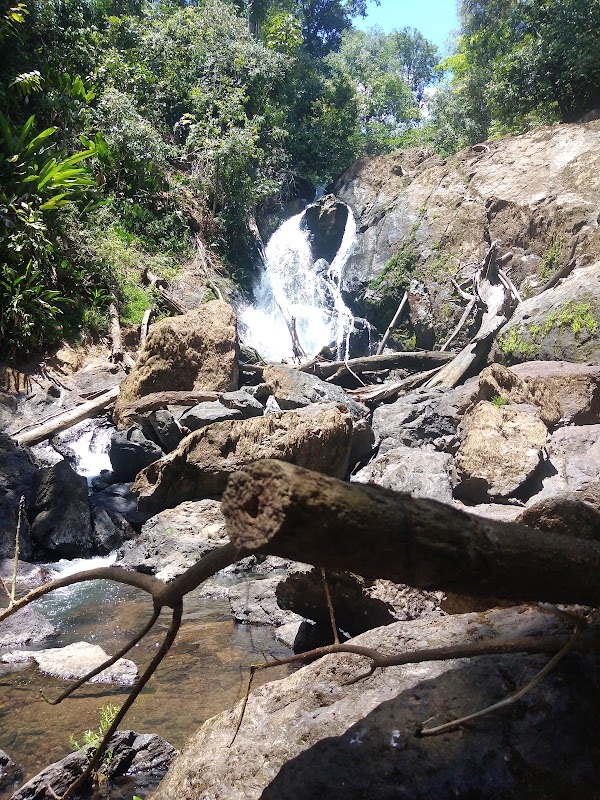Top Waterfall Hikes and Wildlife Spots Around Puerto Jiménez for Adventurous Trekkers
Discover the top waterfall hikes and wildlife watching spots around Puerto Jiménez, where rugged trails navigate roaring cascades and dense rainforest melodies. This guide equips trekkers of all levels with practical tips and vivid insights for tackling terrain that teems with life and sheer natural power.
Start Early to Beat Heat and Rain
Set off at dawn to enjoy cooler temperatures and increased chances to spot wildlife before midday. Afternoon showers are frequent during the wet season, making afternoons less ideal for hiking.
Wear Grippy Waterproof Footwear
The terrain is frequently wet and slippery, especially near rivers and waterfalls. Hiking shoes with strong traction and waterproof features will keep you secure on slick rocks and muddy paths.
Pack Minimum 2 Liters of Water
Hydration is critical with humid tropical conditions and physical exertion. Carry enough water, and consider electrolyte replacements to maintain stamina on longer hikes.
Use Trekking Poles for Stability
Variable trail surfaces and elevation changes can challenge balance. Poles reduce strain on knees and improve footing on slippery or uneven ground.
Top Waterfall Hikes and Wildlife Spots Around Puerto Jiménez for Adventurous Trekkers
Puerto Jiménez opens the door to some of Costa Rica’s most striking natural challenges, where waterfalls command the landscape and wildlife stakes its claim in the dense rainforest. For trekkers ready to engage with terrain that shifts relentlessly—muddy river crossings, steep ascents, and unyielding tracks—this area delivers an authentic adventure.
Begin at the Cerro Osa Waterfall Trail. This 6.5 km out-and-back hike offers a moderate 350 meters of elevation gain over uneven soil and rock. The path twists through thick jungle that vibrates with cicada choruses, while the waterfall itself dares you close with roaring cascades that force a misty spray onto your skin. The trail demands sturdy footwear and a good pace, especially during the rainy season when the earth softens and calls for caution.
Another essential trek lies along the Agujitas River. This 8 km loop involves riverbed hiking, where currents pulse and benches of slippery stones test your balance with each step. The reward is multiple smaller falls and natural pools where tapirs and scarlet macaws make frequent appearances. Early morning visits are best for spotting wildlife before the forest settles into midday stillness.
Don’t miss the less-traveled San Pedrillo Falls. At 4 km round-trip with a steady incline of 250 meters, it’s quicker but steeper. The path is rugged, weaving under towering palms and strangler figs, offering close encounters with toucans and howler monkeys vocalizing their territory. The waterfall here behaves almost like a living force, pushing waters into natural plunge pools that invite a refreshing dip.
When planning, factor in hydration with at least 2 liters of water per person and consider lightweight, quick-dry clothing. Trekking poles can ease the strain on tricky slopes. Aim for hikes in the morning hours to avoid afternoon rain and heat spikes, typical in the wet season from May to November.
Together, these hikes provide a sturdy framework for experiencing the wild pulse of southwestern Costa Rica, where waterfalls aren’t just destinations but active participants—challenging your resolve, refreshing your spirit, and rewarding each step with sights that pull you deeper into the forest’s fiercely alive embrace.
Nearby Trips
All Adventures
Boat Charters
Water Activities
Adventures near Puerto Jiménez
Discover the unique and memorable adventures that make Puerto Jiménez special.
Frequently Asked Questions
What wildlife am I most likely to see on these hikes?
Expect to encounter howler monkeys, scarlet macaws, toucans, and occasionally elusive tapirs near water sources. Early mornings improve spotting chances as animals are boldest during cooler hours.
Are the trails safe during the rainy season?
The trails can become slippery and river crossings more dangerous when water levels rise. Hiking during early morning hours and using trekking poles can increase safety, but extra caution is necessary after heavy rains.
Is it necessary to hire a guide for these hikes?
While it's not mandatory, hiring a local guide is recommended for navigation, safety, and wildlife spotting enhancement, especially on lesser-marked trails like San Pedrillo Falls.
What should I bring for insect protection?
Bring insect repellent with DEET or picaridin and lightweight long sleeves and pants to minimize exposure. Mosquitoes and biting insects are plentiful in humid rainforest pockets.
Are there facilities like restrooms or picnic areas on the trails?
Facilities are minimal or absent on most trails around Puerto Jiménez. Plan accordingly by using rest facilities in town before hiking and carrying enough food and water.
Can these hikes be combined with other activities in Puerto Jiménez?
Absolutely. Many hikers combine these trails with kayaking in the Golfo Dulce or visiting nearby Corcovado National Park for extended wildlife encounters.
Recommended Gear
Waterproof Hiking Shoes
Protects feet from wet conditions and provides grip on slippery rocks and muddy paths.
Lightweight Rain Jacket
Essential for sudden downpours common in tropical rainforest hikes.
Trekking Poles
Assists with balance and reduces fatigue on uneven trails and river crossings.
Hydration Pack
Allows hands-free access to water and helps maintain hydration in humid and active conditions.
Local Insights
Hidden Gems
- "A viewpoint at the top of Cerro Osa offers sweeping views of the Golfo Dulce and nearby islands, often missed by casual hikers."
- "The quiet lagoon near Agujitas River is a favored resting spot for the local river otters, rarely seen but worth waiting for."
Wildlife
- "Besides common species, keep an eye out for ocelots and giant anteaters, elusive but present in the region."
- "The area is a critical corridor for migratory birds and houses a breeding population of resplendent quetzals."
History
"Puerto Jiménez grew from a small fishing village into an eco-adventure hub, maintaining strong ties to Indigenous Bribri communities whose knowledge enriches conservation efforts today."

